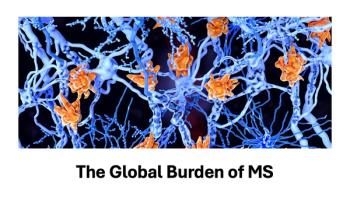
Biosimilars Gain Ground in Turkish Patients with RA and axSpA
Biosimilars enhance arthritis treatment access, with rising adoption among women and long-term patients, revealing key prescribing patterns in Turkey.
Biosimilar use accounts for about
Axial spondyloarthritis (axSpA) and rheumatoid arthritis (RA) are long-term inflammatory diseases that often need ongoing, specific treatments. AxSpA often causes persistent back pain in young adults and may affect up to
In the past 20 years, biologic and targeted synthetic drugs called b/tsDMARDs have improved patient outcomes by reducing inflammation and preventing joint damage.
However, these advanced therapies are costly and can create financial burdens for patients and healthcare systems. Biosimilars, similar versions of approved biologic drugs, offer a more affordable alternative without compromising safety or effectiveness. Since their approval in Europe, biosimilars have become an important option for expanding access to treatment, though their use varies by country.
According to a review published in BMJ Open, it also highlighted that
In Turkey, limited data exists on how often biosimilars are prescribed for rheumatic disease. To address this gap, researchers in Central Anatolia, including corresponding author Hüseyin Kaplan of the Division of Rheumatology at Erciyes University in Kayseri, conducted the study to examine biosimilar prescription rates among patients with axSpA and RA using b/tsDMARDs.
Conducted at Erciyes University’s Gevher Nesibe Hospital, the retrospective study included 647 adults diagnosed with axSpA or RA. Patients were eligible if they visited the rheumatology clinic between May and December 2023 and were using biologic or targeted synthetic DMARDs.
Researchers reviewed electronic and paper records to collect information on age, sex, disease duration, lab results, comorbidities and medications. Data on each patient’s current and previous b/tsDMARDs—including drug type, brand name, biosimilar or reference status and treatment order—were recorded. Disease activity was assessed using BASDAI and DAS28-CRP scores along with ESR and CRP lab values.
Patients using reference biologics were compared to those using biosimilars. Statistical analyses, including t-tests, chi-square tests and logistic regression, were used to identify factors linked to biosimilar use.
Out of the 647 patients, 436 had axSpA and 211 had RA. The average age was 48, and two-thirds were female. Patients with RA had higher rates of comorbidities, longer disease duration and higher inflammation markers than those with axSpA.
Overall, the median duration of b/tsDMARD use was 4.3 years, longer in RA (6.3 years) than axSpA (3 years). TNF inhibitors were the most commonly used treatment (80.7%), with axSpA patients more often on adalimumab and RA patients on etanercept or tofacitinib. The collective biosimilar prescription rate was also 21.2%, similar between axSpA and RA.
It was also found that biosimilar use increased with the number of prior b/tsDMARDs, reaching nearly 40% in fifth-line or later therapies. Logistic regression identified female sex, longer disease duration and later-line treatment as key predictors of biosimilar use. These findings revealed patterns of biosimilar adoption and factors influencing prescribing in real-world rheumatology practice.
Based on results and study methods, this study is the first in Turkey to report biosimilar use in axSpA and RA patients treated with b/tsDMARDs, providing valuable real-world insights into prescribing patterns and factors influencing biosimilar adoption. Limitations include its retrospective design, exclusion of generic tofacitinib, lack of drug survival comparisons and focus on only two rheumatic diseases.
The authors suggest that future multicenter studies examine biosimilar use across all b/tsDMARDs and rheumatic conditions to better understand trends and potential economic benefits.
Newsletter
Get the latest industry news, event updates, and more from Managed healthcare Executive.






















































